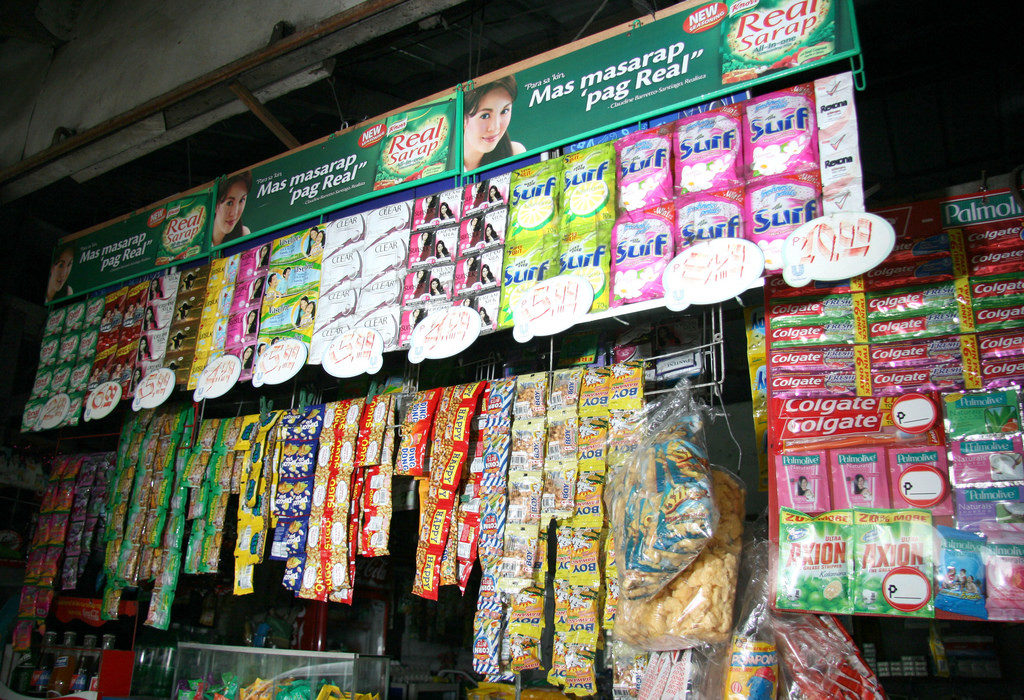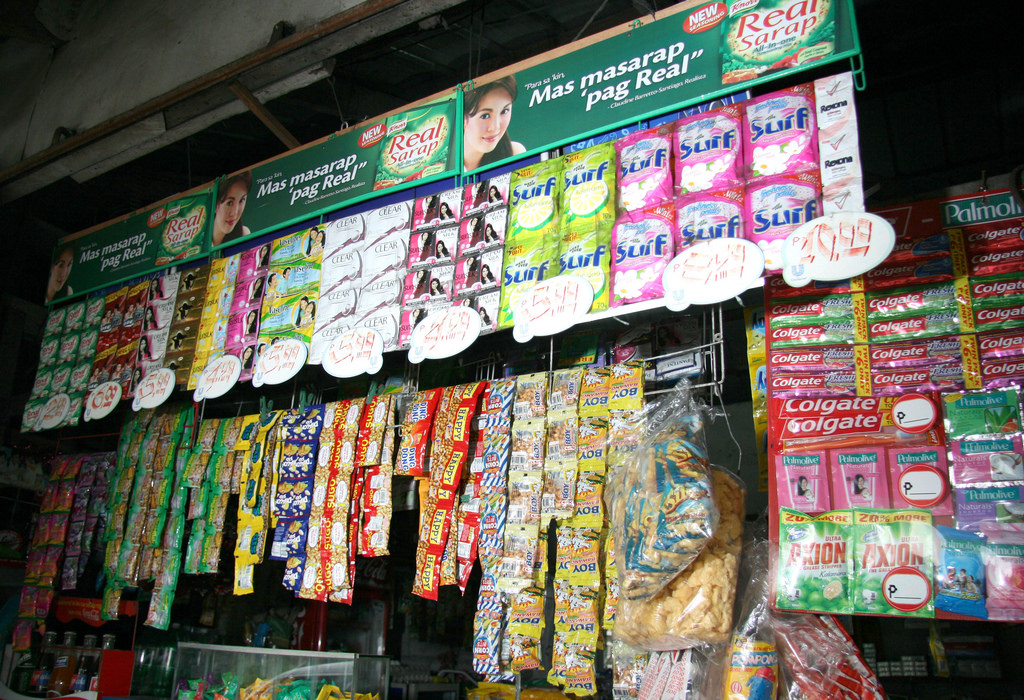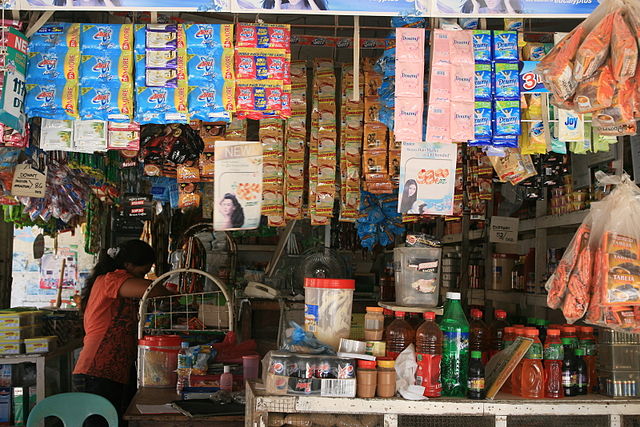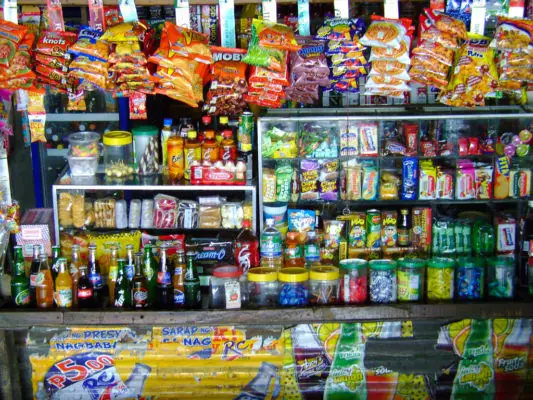Sari-sari stores in the Philippines are a unique and intimate part of the Philippine retail culture.
We not only involve business when transact with sari-sari storekeepers when we holler that familiar “pabili”, we often get involved with their lives. We share gossips about famous celebrities, learn new things in the neighborhood, get invited in baptism, birthday celebration or other occasion in the process.
But that intimate setting and convenience sari-sari stores provide has been eroded, new competitors sprout over the neighborhood and buying behaviors change. The emergence of neighborhood supermarkets and upgrading of public markets mean groceries are more accessible even if they don’t necessarily.
Shopping malls, for instance, draw more customers as they provide a lifestyle of experience, as school friends, lovers and families can spend grocery shopping, cinema viewing, dining and even attending church services in one single place rolled into one.

Perhaps a bigger threat down the road is the further convenience and efficiency of online retail supply chain.
That leaves the sari-sari store concept in a really bad spot. Sure, there are ways to improve your business, but it might just be a matter of time it’ll fade into irrelevance in the modern retail landscape.
So why do we think sari-sari business that we come to know has become a bad idea?
- Higher capital money required
Inflation, additional taxes imposed on commodities like cigarettes and sugary drinks make it more expensive to procure supplies for your sari-sari store business. It now requires larger seed capital to finance an outlet that is expected to turn a decent profit. Loans available to sari-sari stores (say, Pera Agad) is few and far between, perhaps taking cue of the patchy success records these types of retail outlets could muster. This means you may need to dig deeper into your proverbial treasure box.
- New ways to reach customers
Taking advantage of the need for convenience, there are new ways to reach customers to buy daily necessities. For example, OFWs who wish to buy their loved ones in the Philippines can prepay Jollibee treats, grocery packages and even medicines at designated redemption points. This means sari-sari stores are bypassed in the process.
- Margins are low
In order to be competitive, store owners tend to forgo profitability in favor of customer loyalty. In most cases, margins are low, especially because base cost is also expensive; stocks are sometimes not really procured in bulk so there’s very little profit to be made. In some cases, the store is operating in the red.
As a result, the sari-sari store business is unsustainable in the long term.
- Competition is tough
As mentioned, lifestyles have changed and this has adversely affected the bottomline for sari-sari store.
In the past, the sari-sari store is the only accessible place in the neighborhood. Now, other similarly sized stores sprout on every street corner. Also, means of transport also made customers more mobile more than ever — motorized sidecars bring them to marketplace which provide wider variety of goods and possibly cheaper buys. Now, more shopping malls and convenience stores further take away foot traffic from good old sari-sari stores.
- Poorer product quality
Some stores fail to maintain quality control — stale bread, crackers exposed to the sun, near expired sardines and so on — attributed to an effort to cut costs and lack of adequate space and storage.
Thus, customers naturally gravitate towards fresh supplies of well-stocked alternatives, sealing the fate of the old sari-sari store.
Conclusion
Outside looking in, a sari-sari store looks like a simple business to pursue: buy goods, place some markup, and get sales. But it’s tougher than it looks. Without prior research, inadequate capital money and lack of interest, discipline and diligence among store keepers, one can’t help but paint a pessimistic outlook.









